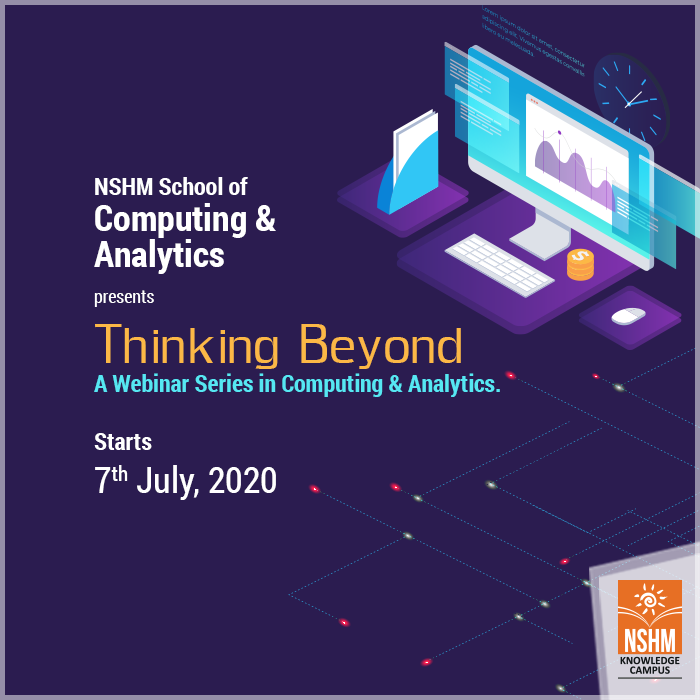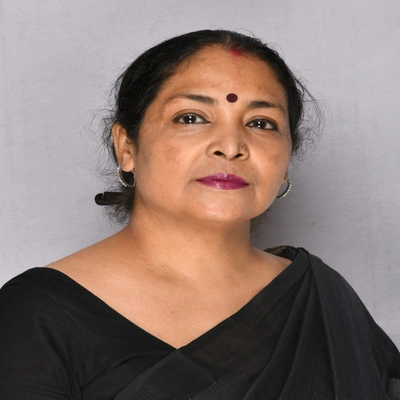Thinking Beyond – A Webinar Series in Computing & Analytics (Part I)
NSC&A is introducing a webinar series “Thinking Beyond”. The webinar series intends to introduce students to new developments and advanced concepts in the field of Computing and Analytics.
The first episode of this webinar series “Thinking Beyond (Part 1)” is scheduled on 7th July 2020 (Tuesday) from 3:00 pm to 4:30 pm. All students of the portal are invited to learn from this webinar.
Presenter: Prof. Sanjay Pal
Topic: Information Security- An Approach of Graph Coloring
Sharing IP blocks in today’s competitive market poses significant high security risks. Creators and owners of IP designs want assurances that their content will not be illegally re distributed by consumers and consumers want assurances that the content they buy is legitimate. To protect a digital product, one of the ways is to embed an author’s signature into the object in the form of minute errors. However, this technique is directly not applicable to protect intellectual properties such as the solution of hard problems which must maintain the correct functionality. In this paper we propose constrained-based water marking technique and layout a theoretical framework to evaluate water marking techniques for intellectual property protection (IPP). Based on this frame work, we analyze a watermarking technique for the graph coloring problem. Since credibility and overhead are the most important criteria for any efficient watermarking technique, we derive formulae that illustrate the trade-off between credibility and overhead.
Expected outcome: In this session, students are introduced to the concept of intellectual property (IP), the security issues with IP, and a specific technique to address IP security.
Presenter: Prof. Asmita Roy
Topic: Internet of Vehicles (IoV) and VANET
Internet of Vehicles (IoV) is a network of smart interconnected vehicles along with people and objects in the environment, which serves to deliver an intelligent transportation system, with functionalities like safer commute for people on road and ease in traffic. It aims at establishing a dynamic wireless connection using radio equipments, sensors and vehicles. IoV emphasizes on four major types of communication which are vehicle-to-vehicle, vehicle-to sensor, vehicle-to-infrastructure and vehicle-to-roadside infrastructure. IoV extends many major functionalities of Vehicular ad-hoc networks (VANET). It enhances the performance of VANET by incorporating intelligent computing infrastructures like cloud computing. For successful implementation of IoV, some of the well-known issues of VANET needs to be looked upon carefully. One of such features is vehicular handoff.
Expected outcome: In this session, students learn the concept of IoV – a specific type of IoT, VANET and vehicular handoff strategies.
Presenter: Prof. Moumita Roy
Topic: Face Recognition Technology
Face recognition technology is a way of recognising a human face through technology. The technology is used in biometric authentication as well as customer identification for enhanced user experience. Facebook uses face recognition technology to suggest tagging of photographs. A facial recognition system uses biometrics to map facial features from a photograph or video. It compares the information with a database of known faces to find a match.
Expected outcome: In this session, students learn the concept of biometrics, and pattern recognition techniques used for face recognition.







